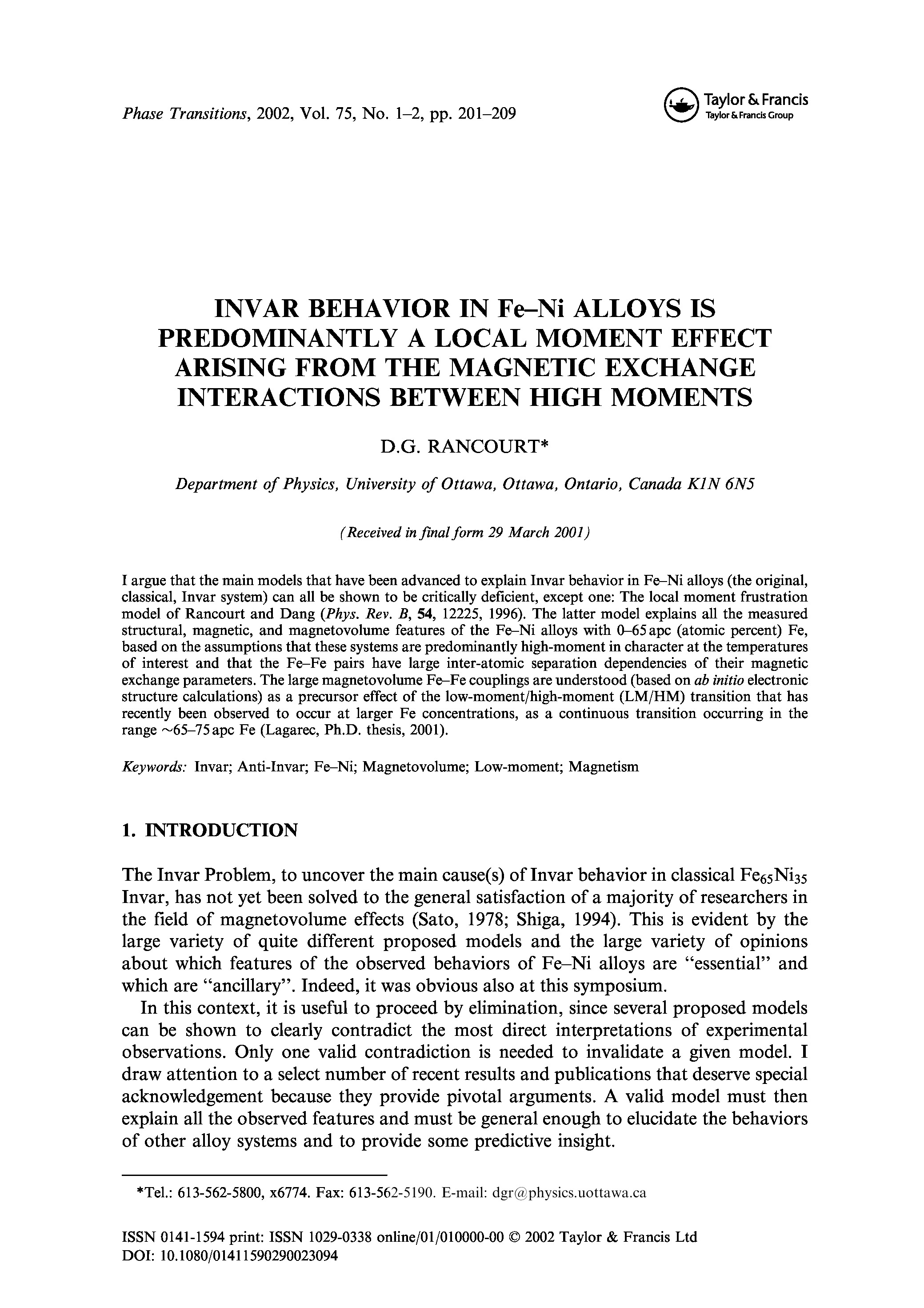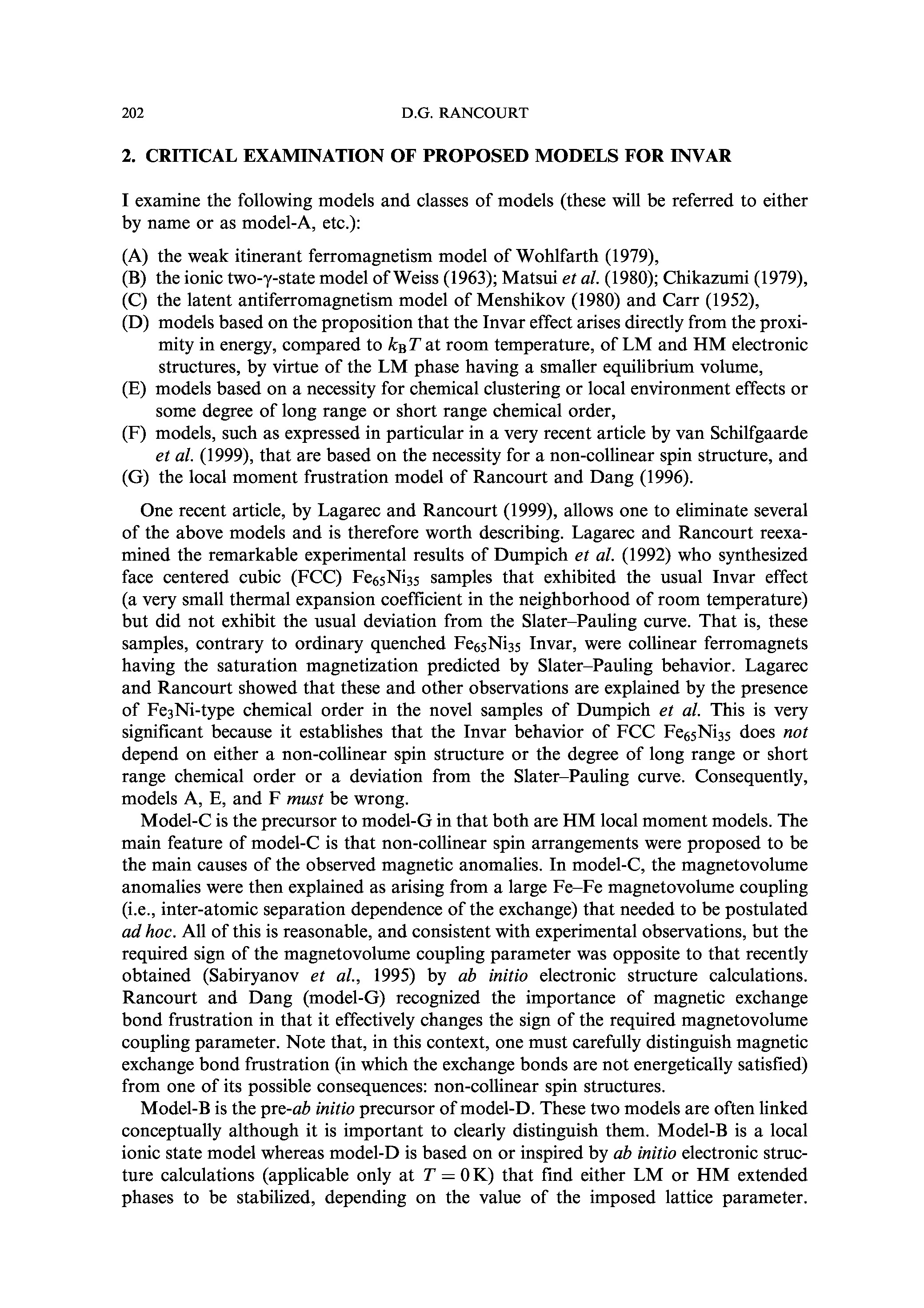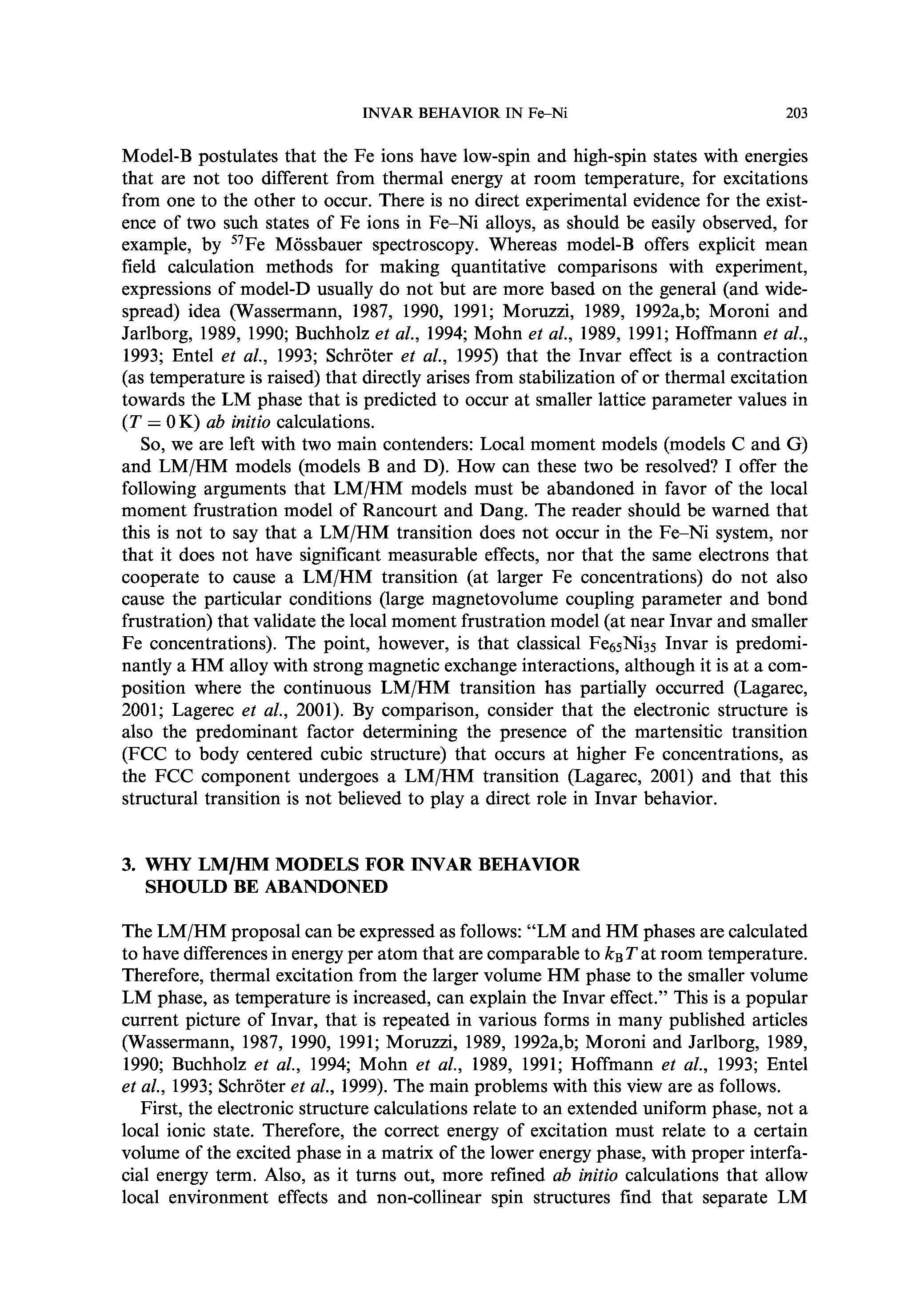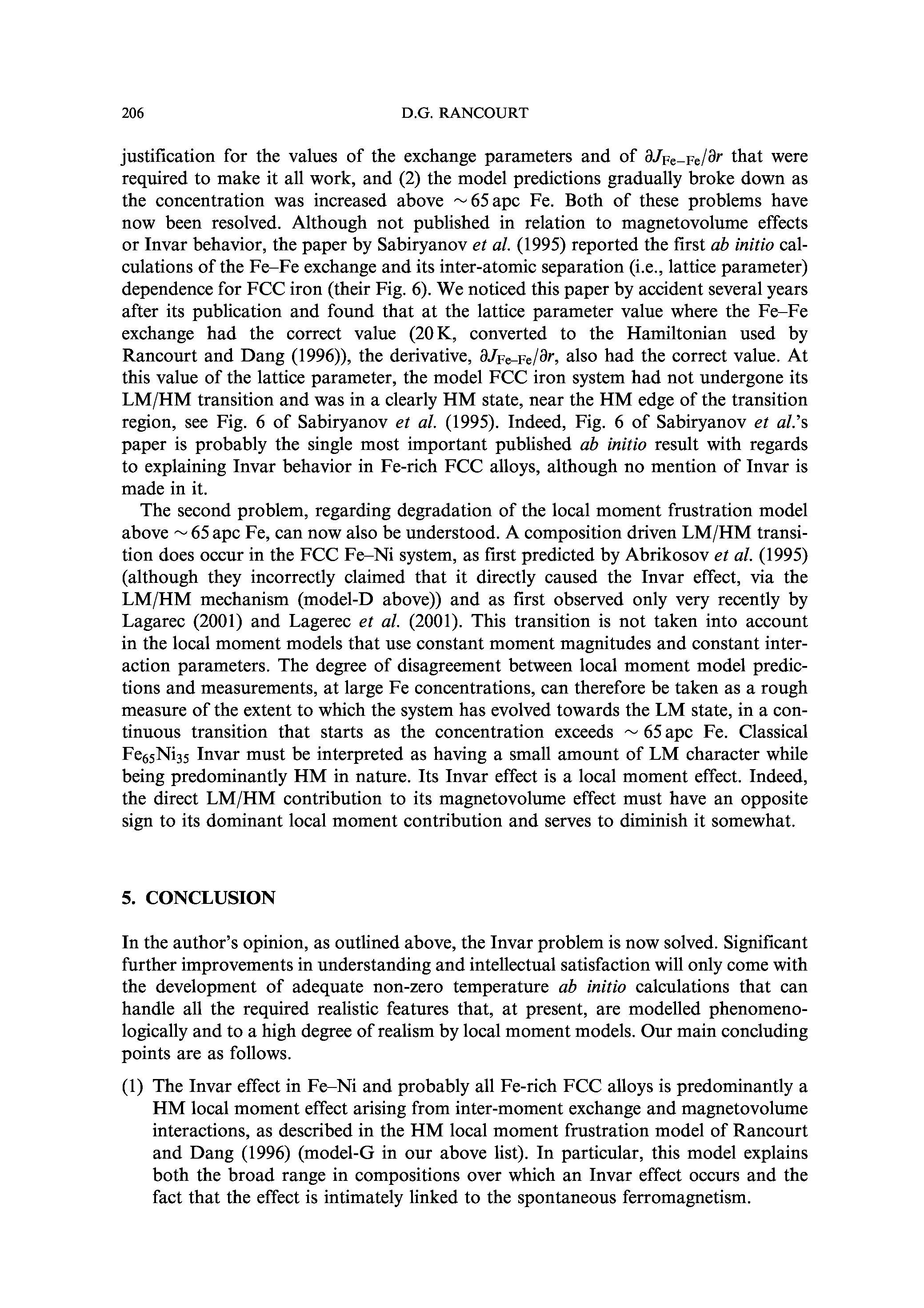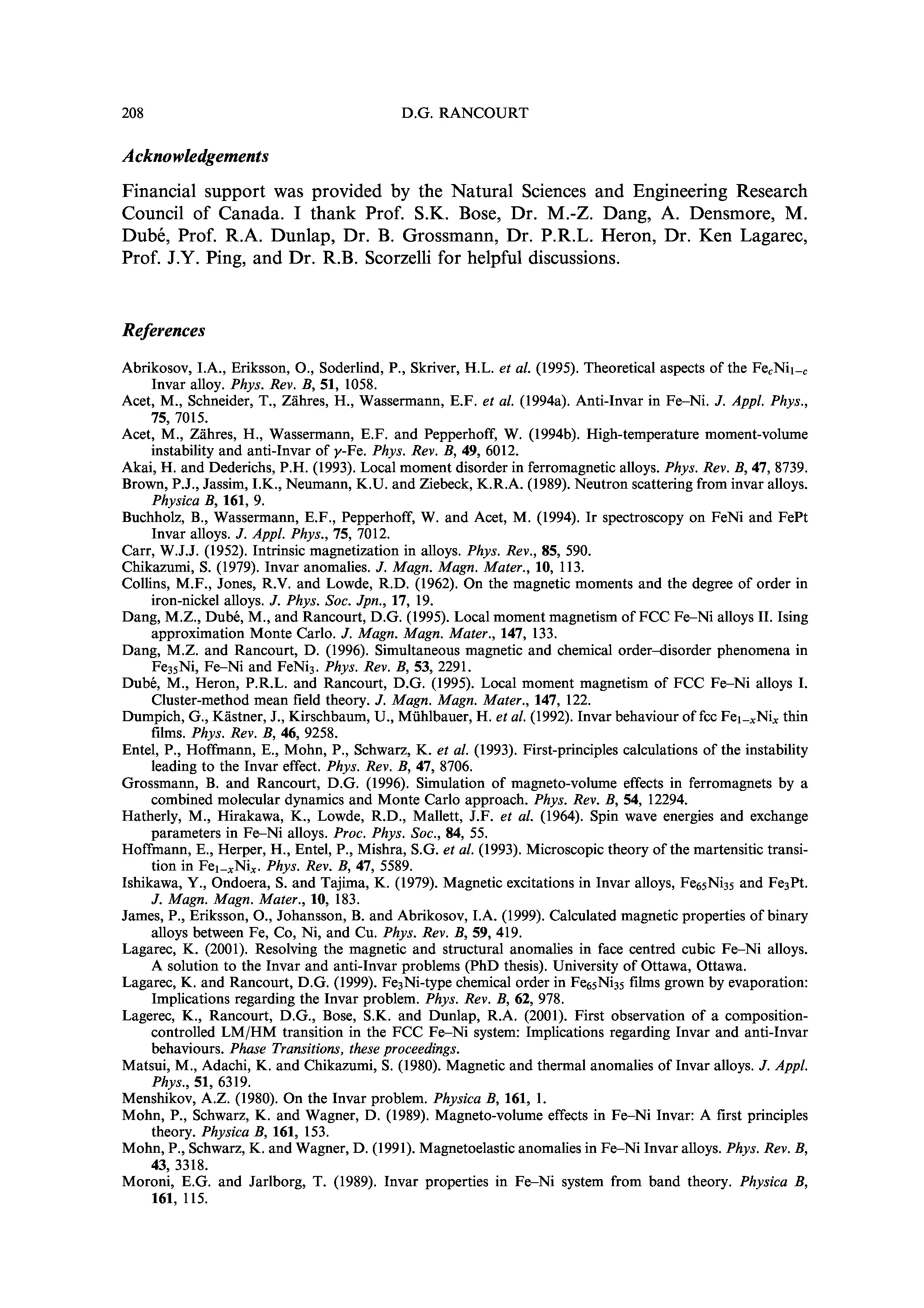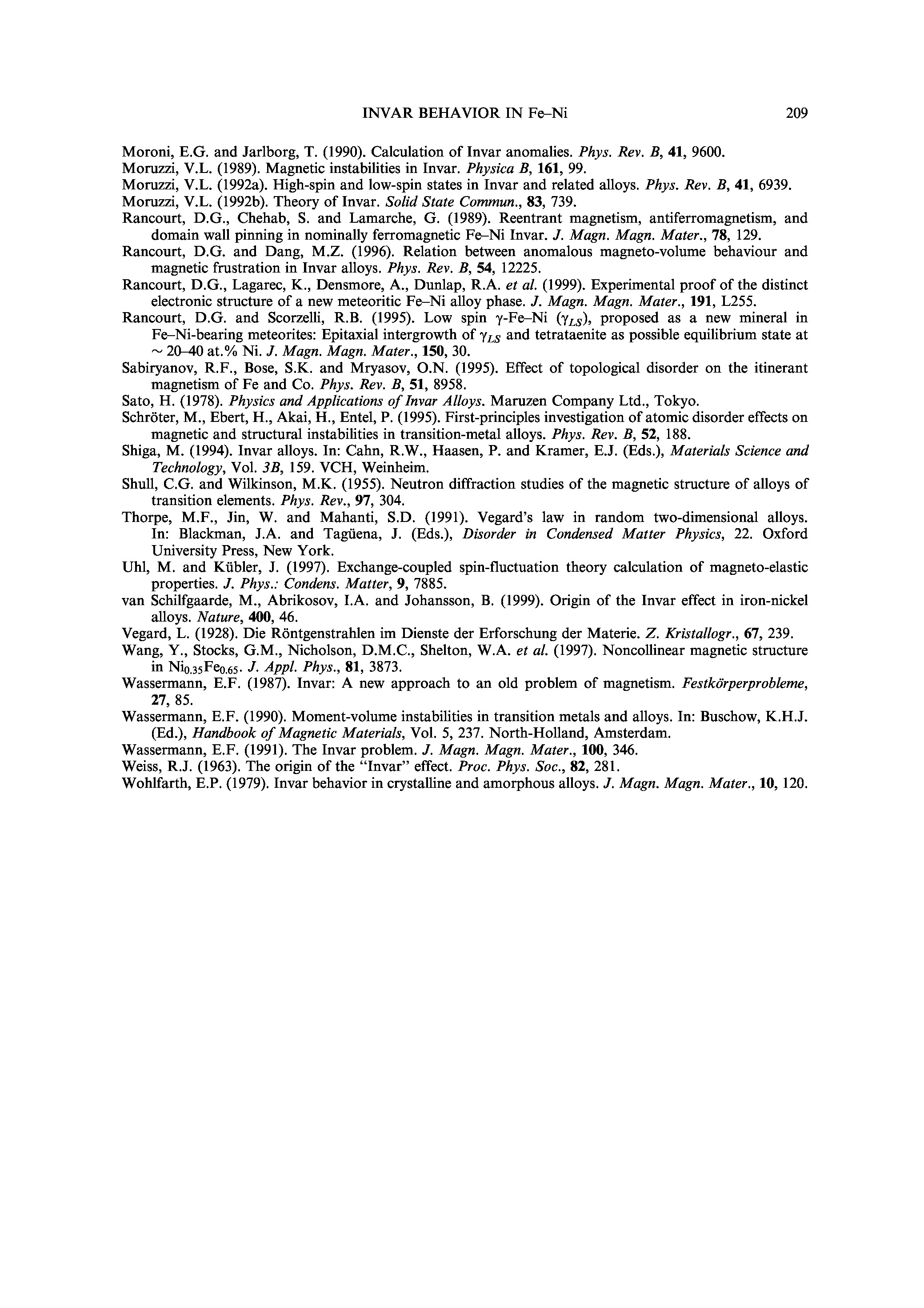DG Rancourt
Phase Transitions, 2002, 75:1-2, 201-209
https://doi.org/10.1080/01411590290023094
Abstract
I argue that the main models that have been advanced to explain Invar behavior in Fe-Ni alloys (the original, classical, Invar system) can all be shown to be critically deficient, except one: The local moment frustration model of Rancourt and Dang ( Phys. Rev. B , 54 , 12225, 1996). The latter model explains all the measured structural, magnetic, and magnetovolume features of the Fe-Ni alloys with 0-65 apc (atomic percent) Fe, based on the assumptions that these systems are predominantly high-moment in character at the temperatures of interest and that the Fe-Fe pairs have large inter-atomic separation dependencies of their magnetic exchange parameters. The large magnetovolume Fe-Fe couplings are understood (based on ab initio electronic structure calculations) as a precursor effect of the low-moment/high-moment (LM/HM) transition that has recently been observed to occur at larger Fe concentrations, as a continuous transition occurring in the range , 65-75 apc Fe (Lagarec, Ph.D. thesis, 2001).
